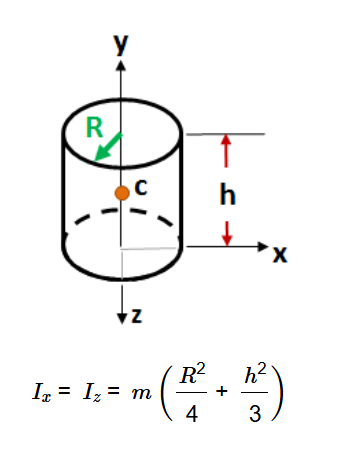 Home
Home
 Back
Back

Definition: This calculator computes the mass moment of inertia (\( I_x = I_z \)) of a solid cylinder about the x or z axis (perpendicular to the cylinder's height), based on its mass (\( m \)), radius (\( R \)), and height (\( h \)).
Purpose: It is used in mechanics and engineering to analyze the resistance of a rotating cylinder to angular acceleration, applicable in designs involving rotating machinery, flywheels, and structural dynamics.
The calculator uses the relationship:
Where:
Explanation: Enter the mass, radius, and height of the cylinder in the chosen units, and the calculator computes the mass moment of inertia. Results are displayed with 5 decimal places. For default inputs (\( m = 1 \, \text{kg} \), \( R = 0.1 \, \text{m} \), \( h = 0.5 \, \text{m} \)), the calculated mass moment of inertia \( I_x = I_z \) is approximately 0.09167 kg·m².
Details: The mass moment of inertia quantifies an object's resistance to angular acceleration. It is essential for designing rotating systems, such as engines, turbines, and flywheels, to ensure stability and efficiency.
Tips: Enter positive values for mass, radius, and height with up to 4 decimal places (step of 0.0001), then click "Calculate." Results show the mass moment of inertia \( I_x = I_z \) in kg·m², g·cm², lb·ft², and lb·in², always with 5 decimal places.